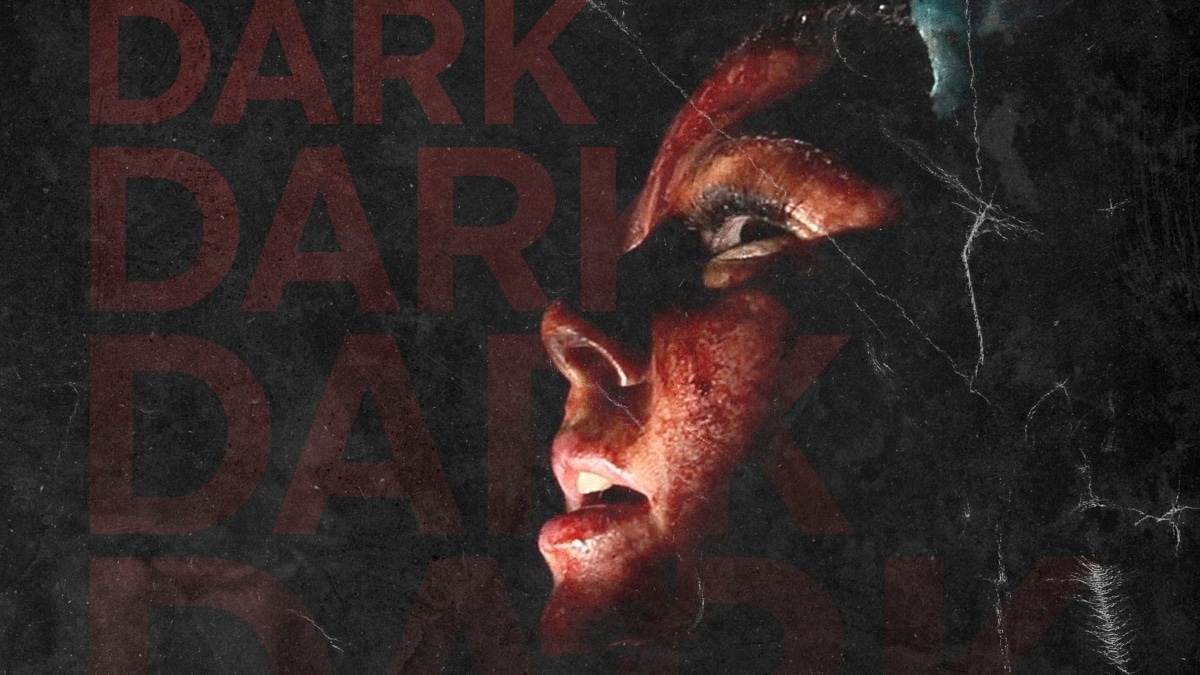
Many have tried to replicate The Blair Witch Project’s achievements. That film which ignited the found footage genre was a sensory experience before experimental films like the one we are about to review. The Outwaters comes close to outmatching Blair Witch, but it does so with an interdimensional spin.
The Blair Witch Project engaged our imaginations with noises of untraceable tormentors, crackly sounds within the woods, and screams from afar. It was the unseen which inspired the most fear.
Instead of mysterious noises, twig dolls, and the sound of children laughing, director Robbie Banfitch throws us into a cosmic horror bloodbath of death, snake-like creatures that screech like humans, and otherworldly terrors that begin from the sound of thunder.
The film centers around a group of friends who happen to be industry professionals in the arts. At the center is Robbie Zagorac (Robbie Banfitch), who appears close to his brother, Scott (Scott Schamell).
The film starts with a mellow atmosphere. Robbie and his brother are gearing up for an adventure in the Mojave Desert. Robbie is planning to shoot a music video for his friend Michelle (Michelle May), and they are bringing along Angela (Angela Basolis), an expert in make-up.
As we are introduced to the players of this looming desert of chaos, the film uses geological elements to foreshadow terrible events to come. Before they leave for the trip, their home in LA is bombarded with a series of earthquakes. This is complemented later in the film when the desert wasteland (as well as the surrounding rocks) feels like a living and breathing monster. Following the earthquakes, Robbie discusses with Scott about having weird dreams involving their father.
The sound of thunder
The narrative does a fantastic job of taking time and fleshing out the relationships. We get a true sense of these characters as individuals and how much they care for one another.
The first 45 minutes perform similar to a well-crafted travel blog on YouTube. If it were not for a terrifying flash-forward scene during the opening of the film, one might believe they attended the wrong movie.
Once they arrive in the desert, the film maintains a brief calm, giving a false sense of security. There are subtle happenings such as radio interference as they approach the desert but nothing alarming. Until the night comes, on a perfectly clear sky, the sounds of crashing noises echo through the sky like an invisible lightning show taking place. Then all hell breaks loose.
The Outwaters triggers the viewers’ imagination with two methods. The first is an extremely well-written dialogue. There are moments in the film where an actor will convey feelings and sensations with crisp descriptive language. It places the viewer in their mindset without showing what they are experiencing.
After the first disturbing night, one character notes the air feels “shimmery.” Another scene has a character describing a “light folding in on itself” by a rocky area. As he touches the rough service, he describes feeling a current flowing through the terrain. A different sequence has someone detailing a nightmare in vivid detail.
The language sets the imagination on fire, making us feel the same unnerving atmosphere as the characters.
The execution also makes the desert feel like its own character.
The second method is the magnificent sound design. Most of the horrific second half is photographed in a pitch-black environment with the illumination of a flashlight.
We only see what the light sees, and everything happening outside the flashlight is nightmarish audio. When something does appear in the light, we wish for it to return to the darkness.
This type of experience might frustrate some viewers who are accustomed to watching films where everything is visible on the screen. But this reviewer is pleading with horror fans to let go of tradition and let the terrifying sounds wash over them.
The Outwaters is bold to tackle cosmic horror. There are sequences in The Outwaters that are equally as terrifying as the humanoid bear from Annihilation.
And bear-in-mind (pun not intended) this was all accomplished on a reported budget of $15,000.
The only issue with The Outwaters might be its conclusion. The final moments, albeit disturbing, get rather carried away with themselves.
The movie is defined by the color of blood. However, the finale has an absurdity to the gore that felt out of place from the rest of the film. Even so, the nightmarish journey is not impacted by this outcome.
The Outwaters is an ambitious cosmic swan-dive into hell
Drenched in the color red, loaded with otherworldly horrifying soundscapes and ideas, and brimming with ambition. The Outwaters is a cosmic swan-dive into found footage hell. Director Robbie Banfitch has discovered new ground in a genre that once felt lacking in fresh concepts.
The creation of this movie is a film school lesson about how to be inventive with very few resources. And surprisingly, it might be a rare horror film that rewards repeat viewings as the audience catches details missed the first time.
The Outwaters swims a little too deep into violent absurdity in its final moments. But the journey leading there is a rollercoaster of astral and cosmic nightmares that horror fans must see for themselves.
For more reviews, check out our coverage of films such as Landscape with Invisible Hand and Magazine Dreams.
The Outwaters is in select theaters starting today.